Welcome to our 18 days Yangtze River cruise tour. Along the way, we will first explore the famous historic and cultural cities: Beijing and Xi’an, both of which used to be the capital of many dynasties in ancient China. The Great Wall and the Forbidden City in Beijing, as well as the Terra Cotta Warriors and Horses Museum in Xi’an will undoubtedly bring you back to ancient times. Then the Li River Cruise from Guilin to Yangshuo will bring you to a wonderland where your worries will be gone. Next will be our Yangtze tour from Chongqing to experience the mystical power and beauty of nature. Karst landscapes will be admired during this Yangtze River Cruise tour with Zhangjiajie. Besides, we will taste the attractive Mapo spicy bean curd in Chengdu and the steamed buns in Shanghai. Sounds interesting, isn’t it? Come and join us. We are waiting for you!

Welcome to Beijing, your first stop in China! Your local guide will meet you at the airport, holding your name sign. You will be escorted to your hotel upon arrival. Don’t hesitate to ask if you have any questions about China. Beijing is rich in historical sites and cultural institutions since the rulers of 8 successive dynasties have set up their capitals here. Covering an area of over 16 thousand square kilometers, it has a population of more than 21.6 Let’s explore this place together. Exciting and wonderful 18 days China Yangtze River Cruise tour will commence.
After breakfast, our first stop is the Tian’anmen Square in the center of Beijing. In the Ming Dynasty (1368-1644) and the Qing Dynasty (1644-1912), it was the place where the orders of emperors were made clear to all. In ancient times, when there was an imperial edict, it would be firstly received by an official in the Hall of Supreme Harmony, put in a cloud-shaped plate and carried out of the hall. Then, this official would go up to the gate tower on the Tian’anmen Square, and hand the imperial edict to another official, who was assigned to announce it.
The square was built in 1417 and rebuilt in 1651, when it was just a closed T-shaped aulic square, which showed the supreme power of the royal family. In 1914, it was reconstructed for the second time, and gradually became an open square. It’s the world’s largest city square, covering an area of 440,000 square meters, 9 times larger than the Red Square in Moscow. It has witnessed many big events. For example, the founding ceremony of the People’s Republic of China was held here on October 1st, 1949.
After passing through the square, you will reach the nearby Forbidden City (closed each Monday). It was the place where 24 emperors of the Ming and Qing dynasties lived. The main buildings here are the Hall of Supreme Harmony, Hall of Central Harmony and Hall of Preserving Harmony. The Hall of Supreme Harmony was the place where great ceremonies, such as national celebrations, the enthronement of a new emperor, or the crowning of the empress were held. Before great ceremonies started, emperors would often have a rest in the Hall of Central Harmony. The Hall of Preserving Harmony was the place where imperial banquets and nation-wide examinations were held.. You will be impressed by the magnificent buildings in the Forbidden City.
If you want to overlook the magnificence of the Forbidden City, Jingshan Park is worth going to. It was a beautiful royal landscape garden in the Ming and Qing dynasties. Besides the Wanchun Pavilion that can overlook the Forbidden City, peonies here are the most famous. There are over 20,000 flowers of 569 varieties gathered here. Different flower exhibitions held here every year attract lots of people from home and abroad.
In the afternoon, we will go sightseeing in Hutong near Shichahai, where you will see many ancient buildings. Hutong is a narrow lane, alley, or small street between rows of single-storey Siheyuan (quadrangle courtyard) dwelled by Beijingers in the past. There are thousands of Hutongs in Beijing, wherein Shichahai area, Nanluoguxiang (namely “South Gong and Drum Lane” or “South Luogu Lane”) and Dongjiaominxiang (East Foreign Residents Alley) are very famous. We will take a rickshaw to explore the Hutong in Shichahai area and visit a local family.
Later, we will go to the Summer Palace, the largest and best-preserved royal garden in China. In 1750, the construction of the lavish royal garden started to prepare for the birthday ceremony of Emperor Qianlong’s mother. In 1888, the garden was reconstructed and renamed as the Summer Palace, a place for the royal families to spend their summer. Here you will see the Hall of Benevolence and Longevity, where emperors often handled state affairs, the Hall of Joyful Longevity, which was the main residential building of emperors, and the Longevity Hill as well as the Kunming Lake, which were mainly for sightseeing.

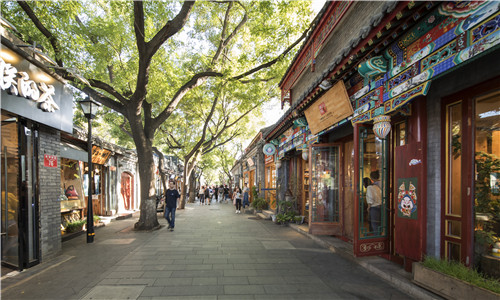
In the morning, we will visit the Ming Tombs, a tomb complex where 13 emperors of the Ming Dynasty were buried. It is 50 kilometers northwest of the downtown area, and it takes about an hour to get there. In the Ming Tombs scenic area, we will first see the Sacred Way. You will find 36 stone statues here. There are 12 stone statues in human figures (including the general, civil officials and meritorious officials) and 24 in animal figures like the lion, camel, elephant, xiezhi (a mythological unicorn), qilin (one of the four “divine animals”, the other three are dragon, phoenix, and tortoise), and horse. Then we will visit the Ding Tomb, one of the three biggest tombs in the tomb complex. It is the tomb of Emperor Wanli (1563-1620) and his emperesses.
After lunch, we will drive 65 kilometers northwest for about half an hour to the Badaling Great Wall. It was built in 1505, and has a whole length of 1,300 kilometers. The terrain here is precipitous, so the Badaling Great Wall was a very important strategic pass in ancient times. It is the first section that is open to visitors. And for your convenience, cable cars are provided. You can see a watchtower every few hundred meters. Legend has it that a long time ago, eight celestial beings were wandering around. And when they passed the Badaling Great Wall, one of them said: “Let’s each find a place to rest.” Others agreed and cast their spells. Suddenly, eight abutments appeared on the Badaling Great Wall. These celestial beings then sat on them for a rest. After they left, the abutments became 8 watchtowers on the Badaling Great Wall.
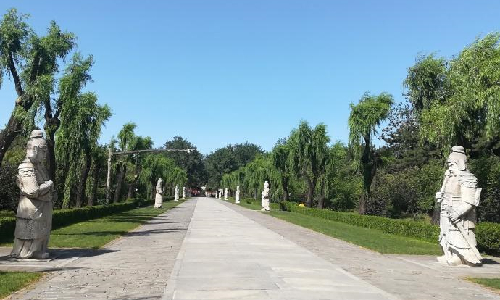
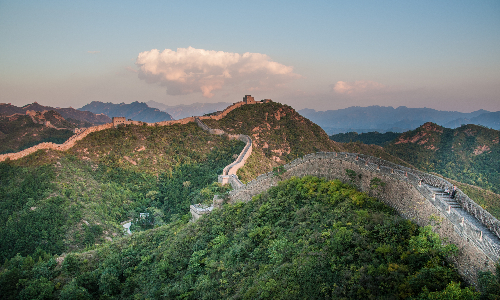
 Xi’an
Xi’an After breakfast, we will go to the Temple of Heaven, the holy place for emperors to pay homage to the heaven and to pray for a good harvest in ancient times. The most magnificent buildings here are the Hall of Prayer for Good Harvest (Qiniandian) and the Circular Mound Altar (Huanqiutan). The former was used for worshipping in spring, while the latter was used in winter. The Hall of Prayer for Good Harvests is held up by 28 pillars, which are arranged in an annular manner. The four pillars along the inner circle represent the four seasons - spring, summer, autumn, and winter; the 12 pillars along the middle circle represent the 12 months; and the 12 along the outer circle represent 12 Shichen (an ancient Chinese timing unit equaling two hours). The Circular Mound Altar, which symbolizes the heaven, is also round. The number of fences and steps in the Circular Mound Altar is either 9 or a multiple of 9, which is the biggest positive number, and symbolizes the so-called “Nine-Five Dignity” (meaning supreme power) of the emperor.
After lunch, you will take the estimated high-speed train G57 14:00/18:24 to Xi’an. Your tour guide will pick you up at the Xi’an North railway station and transfer you to the hotel. Welcome to Xi’an, one of the world’s four major ancient cities. It covers an area of over 10,000 square kilometers and has a population of more than 10 million. With a history of more than 3,000 years, Xi’an served as the capital of 13 dynasties. Xi’an, or Chang’an as it was called for many centuries, was the starting point of the Silk Road, a trade route connecting Asia, Africa and Europe. You will experience the prosperity of ancient China in this city.

After breakfast, we will drive 40 kilometers northeast to the Terra Cotta Warriors and Horses Museum, and it takes nearly an hour to get there. It is the largest ancient military museum in China and is hailed as the Eighth Wonder of the World. The terra cotta warriors and horses here are all sacrificial objects of Qin Shihuang-the First Emperor of Qin Dynasty (221 BC-207 BC). Emperor Qin Shihuang built the terra cotta warriors and horses as his underground army to protect his soul in the after-world, so that he can still hold power. These terra cotta figures are life-size and in battle formations. What’s amazing about these figures is that none of them is the same with another. They are all with unique faces, cloths, and gestures.
In the afternoon, we will first visit the Big Wild Goose Pagoda. It is a seven-storey pagoda where f Buddha statues, Buddhist relics and Sanskrit scriptures brought back from India by Master Xuanzang (an eminent monk) of the Tang Dynasty (618-907) are stored. And there is a square around the pagoda. If you are lucky, you might see the music fountain here, which is the largest in Asia. The water surface area of the fountain is up to 20 thousand square meters. The fountain can present as many as 22 different patterns, such as lotusand seagull. And the water can reach 60 meters high. What’s more, the audio system is with high fidelity and you can hear the music clearly from afar. Here you will be offered an audio-visual feast.
Then we will go to the Muslim Quarter, a famous food street in Xi’an. It is about 500 meters long. Food booths, stores and souvenir shops run by Muslims, as well as buildings modeled after those of the Qing Dynasty are on both sides of the street. One famous site nearby is the Great Mosque, where we will visit next. It is a grand Muslim architectural complex with a history of over 1,200 thousand years. It combines a traditional Chinese architectural form with Islamic functionality. More than 1 million visitors from over 100 countries in 5 continents have visited here.
After visiting the Great Mosque, our tour guide will transfer you to the hotel. Your Xi’an tour comes to end. Another beautiful city is waiting for you.

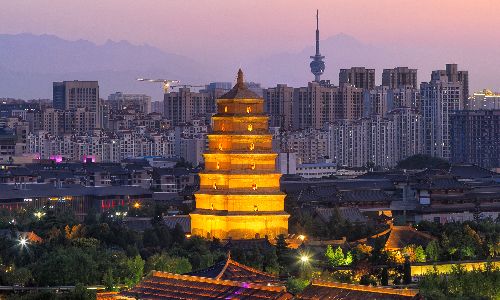
 Guilin
Guilin After breakfast, you will be escorted to the airport and take the estimated flight 3U3269 14:45/18:10 to Guilin. Your tour guide in Guilin will meet you at the airport and transfer you to the hotel.
Welcome to Guilin, a beautiful city in south China. The epithet “By water, by mountains, most lovely, Guilin” is often associated with the city. It’s famous for not only its excellent scenery, but also the unique geological formations. Here you will see clear waters, craggy mountains and spectacular limestone caves. It’s a place that you would like to stay once you come. Let’s explore it together.
 Yangshuo
Yangshuo Guilin
Guilin In the morning, you will take the Li River Cruise to Yangshuo. This 83-kilometer journey by ship takes about 4 hours. Lunch is offered. There will be Chinese-style boxed lunch on the three-star cruise and Chinese-style buffet on the four-star cruise. We have arranged the three-star one for you. Please let us know if you want the latter. Cruising the Li River is a delightful experience for you to explore the natural beauty. Don’t worry about the weather, because whether on sunny or rainy days, the scenery here is unique and charming. When it’s sunny, you will see the reflection of lush mountains on the river; and when it’s rainy or misty, you will the looming mountains mysterious and attractive. There’s a sight you cannot miss, called Yellow Cloth Shoal, a scene of mountain reflections on the river. After passing a turn on the river, there is for everyone the occasion to take a memorable picture with a 20 RMB banknote.The Yellow Cloth Shoal is the sight that is printed on the 20 RMB banknotes.
After getting to Yangshuo, we will stroll along the famous Yangshuo West Street, the most ancient and bustling street in Yangshuo. This street is about 800 meters long and 8 meters wide. Being completely paved with marble, it is a typical example of a southern China street. Brick houses with the style of the Ming and Qing dynasties are on both sides.
It is also called “the foreigners’ street”, because there are many foreigners here, sometimes even outnumber the Chinese. Many local people here, including some seniors over 70, can communicate with people in fluent English. Restaurants, shops, and bars here are decorated in a mixture of Chinese and western styles. All these made this street more exotic and attractive.
Our tour in Guilin ends here. And then you will be transferred to the hotel.
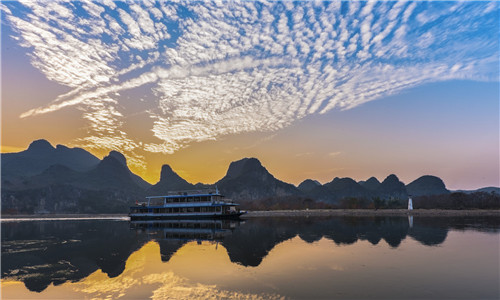
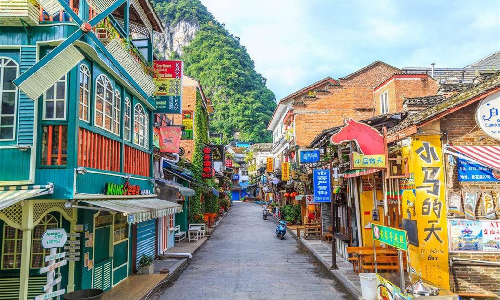
 Chengdu
Chengdu It’s time to say goodbye to this beautiful city. After breakfast, we will escort you to the airport to take the estimated flight CA4324 11:50/13:35 to Chengdu. Our local guide in Chengdu will meet you at the airport arrival hall, holding your name sign, and transfer you to the hotel.
Welcome to Chengdu, the “Land of Abundance”. As the capital of Sichuan Province, Chengdu is famed for giant pandas and hotpot. It has a history of over 3,000 years and is a place where different ethnic groups gather. The climate here is moderate, making Chengdu a livable city.
Today, we will first visit the Chengdu Research Base of Giant Panda Breeding, a place especially for research, breeding, and preservation of endangered wild animals. With an area of about 667,000 square meters, it is a combination of the wilderness area and artificial landscapes. There are 215 pandas in the base by the end of 2020. Pandas are probably one of the luckiest creatures in the world. It is said that pandas spend nearly half of the day sleeping and playing, and the other half of the day eating. They mainly feed on bamboos. An adult panda can eat up to 20 kilograms of bamboos per day. Besides banboos, they also eat fruits and vegetables. And in the research base, there are nutritionists who work on food paring for pandas. Here you will see many cute giant pandas living in different rooms. You can also take photos with them, which will be a nice post on your Twitter.
After lunch, you will be driven to the People’s Park to experience the relaxing life of the locals nowadays. Chengdu has a long history of tea culture. And the Heming Tea House in the park is the most popular among locals and visitors. A covered-bowl tea is a must-try. You can find a half-foot tea table, sit on the bamboo-made chair and order a cup of tea to enjoy some leisure time. Such a small cup of tea connects people from all walks of life. So you might hear everything at the table here, from state affairs to family chores.
Then you will continue your trip to visit the Wuhou Temple. Wuhou Temple is the only combined memorial temple for both a king and his minister in China. It mainly consists of the Temple of Liu Bei and the Temple of Zhuge Liang. Liu Bei founded the Kingdom of Shu and was regarded as a great statesman and strategist in the Three Kingdoms Period (220-280). Zhuge Liang was the Cheng Xiang (an ancient term for prime minister) of the Kingdom of Shu at that time. Although both the emperor and his official are worshipped here, some details are showing the difference in their status. For example, the temple of Liu Bei is in front of that of Zhuge Liang’s, and the former is also a little higher than the latter in terms of the foundation. The censer in the front of the former is round and carved with a dragon, while the latter is square and without dragon patterns. (In the ancient times, the round shape represents the supreme power. And the dragon is the symbol of emperors.)
In the evening, we will take a walk along Jinli Street, which is near the Wuhou Temple. Jinli Street is an ancient street integrated with the folk custom and local food. Here you will have the chance to taste the local snacks, such as the balls of glutinous rice flour, and experience the local activities such as making clay sculptures.
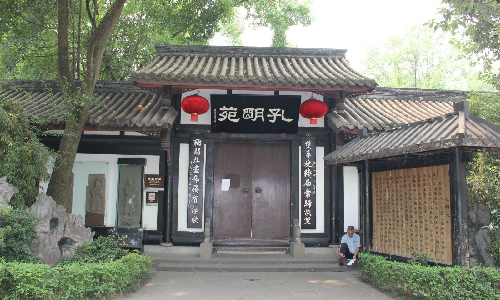

 Chongqing
Chongqing After breakfast, our guide and driver will escort you to the railway station to take the estimated high-speed train G8611 10:38/11:40 to Chongqing. Our local guide will meet you at the railway station and take you to the Hongya Cave, a commercial aerial pedestrian street. Based on the local traditional buildings-Diaojiaolou, a kind of stilt-style architecture, Hongya Cave is built along mountains and rivers. That makes it a mixture of the natural landscape and human landscape. There are mainly four cultural areas: Zhiyanhe Bar Street Area, Tianchengxiang Bayu Culture Area, Banquet Food Area and Exotic Balcony Area. There is also a musical square that can hold over 3,000 people, and you might see musical performances, opening or closing ceremonies of various activities here. You will spend some leisure time here.
Later in the afternoon, we will transfer you to the Chaotianmen Dock, a major water transportation hub in Chongqing. Here we will embark on a cruise ship to enjoy the beauty of the Yangtze River. The Yangtze River is the third longest river in the world, with a length of 6,397 kilometers. Your Yangtze River Cruise journey will officially start at 9 p.m. today. Have a great journey on the ship!
Here are some tips that might be useful for you:
1. Dinner is not included today on the ship. So we suggest that you pick some nice food in Hongya Cave late in the afternoon.
2. When you start the cruise at night, it might be cooler than when you are on the land. we suggest you bring some long sleeves even when you are travelling in Summer.


After breakfast, you can practice the Tai Chi if you are interested. Tai Chi, as a type of traditional Chinese martial art, can edify your temperament and strengthen your body.
Today, you will take a shore excursion to the Fengdu “Jade Emperor”. One of the main buildings here is the Jade Emperor Temple. The Jade Emperor used to be considered as the head who had the highest power among all celestial beings, so he is the one that’s mainly worshipped here. There is also the Great Buddha Hall, where Sakyamuni, the founder of Buddhism, is enshrined. On both sides of the hall stand sculptures of the eighteen disciples of Sakyamuni.
We have also prepared an optional shore excursion-Fengdu “Ghost City” for you. You will pay an extra fee on site if you would like to visit this place. With a history of over 2,000 years, the Ghost City is famous for buildings and things in the style of the netherworld. It’s said that this is the place that one’s soul will go to after death, and that different ghosts here perform their duties to govern this ghost world. Here you will see a national forest park, a sculpture of the demon king and China’s largest complex of tombs of the Han Dynasty (202BC-220AD).
There will be a buffet lunch on board. And in the afternoon, there will be no arrangements and you can enjoy a free afternoon on the ship!
In the evening, there will be a Captain’s Welcome Reception, from which you will feel the warmth of the host. A buffet dinner is offered at the reception. It’s also a good opportunity to learn more about China and make some friends.


In the morning, you can practice the Tai Chi if you want. This morning, our ship will sail through the Qutang Gorge, which is only eight kilometers long but encompasses the most dangerous part of the gorges. On two banks are precipices, which seem to be split by axes, and plank roads are built along the face of these cliffs. There is a human-shape stalactite, which looks like a monk with his head downward. Legend has it that a general in the Song Dynasty (960-1279) wanted to move the remains of his friend, a general that was framed and then killed by a traitor and buried in the mountainside. This friend of his was not reckoned as a hero died of battle but a sinner because of the betrayal of the traitor. So he cannot get his body back openly. Therefore, he decided to do it at night. One day, after night fell, he tried to chisel plank roads along the cliff for him to walk on and move the body. But he was seen by an early-rising monk, who later imitated the cock crow to scare the general away. Hearing the crow, the general thought that dawn would come. Therefore, he stopped chiseling the road and left the cliff, failing to move the remains of his friend. Before long, he found that he was tricked. Being very angry, he caught the monk and hung him upside down as a punishment. Day after day, the body of the monk turned into the stalactite. This site along with its story has attracted many people.
Then the ship will sail into a deep and attractive area, Wu Gorge. Winding 46 kilometers, it is the second gorge of the Three Gorges that we will pass. There are soaring mountains here and this long gorge makes it hard for the mist to disperse. So, it is usually misty in this area. You will feel like being in a wonderland.
After your buffet lunch on the ship, we will have an interesting excursion to Goddess Stream. It’s a 15-kilometer stream with rapids, 2/3 of which are surrounded by the narrow valley where few people have gone to. So you will capture the beauty of nature in raw.
When night falls, there will be a Captain's Farewell Banquet. Enjoy this last evening on the Yangtze River cruise ship to the fullest!


 Yichang
Yichang Zhangjiajie
Zhangjiajie After breakfast, our tour guide will pick you up from the cruise ship and transfer you to the Yichang Railway Station. You will take the estimated train K1473 12:58/17:54 to Zhangjiajie.
Our journey in the next few days will be no less exciting than that during the Yangtze River cruise. Your local guide will pick you up at the Zhangjiajie railway station, holding your name sign. Then they will transfer you to the hotel and give you a brief introduction about this city. Located in the northeast of Hunan Province, Zhangjiajie covers an area of 9,653 square kilometers and has a population of about 1.7 million. It’s a popular tourist destination famous for its natural scenery. There is China’s first national forest park, namely Zhangjiajie National Forest Park. The Park is known for its unique landscape with lush forests dominated by quartzite sandstone pillars. It is noted for over 3,000 quartzite sandstone pillars and peaks and 800 rivers and streams. Most attractions here are shaped by nature rather than humans.
In the morning, we will visit the Wulingyuan Scenic Area. With a total area of 500 square kilometers, Wulingyuan Scenic Area consists of three parts-Zhangjiajie National Forest Park, Suoxi Valley Natural Reserve and Tianzi Mountain Natural Reserve. It was admitted to the World Natural Heritage List in 1992. We will take the Bailong Elevator to enjoy the scenery. With a vertical height of 335 meters, Bailong Elevator is acknowledged as the highest sightseeing elevator in the world. The elevator is transparent, giving you a novel sightseeing experience. Normally, it takes the elevator only 1 minute to get to Yuanjiajie Scenic Area. In the previous days when there was no elevator, it took tourists 4-5 hours to climb up to Yuanjiajie Scenic Area on the mountain top. In Yuanjiajie Scenic Area, there is a famous mountain called Southern Sky Column, which is the prototype of the Hallelujah Mountains in the famous American science fiction film “Avatar”.
After lunch, we will go to Tianzi Mountain. Tianzi means the “son of heaven” in Chinese. Tianzi Mountain takes its name from a local man, Xiang Dakun. He was the leader of the Tu ethnic group. He led a revolution and avowed himself as Tianzi (son of heaven). The highest peak of Tianzi Mountain is over 1,200 meters and Tianzi Mountain is honored as the best one among the mountains in Zhangjiajie for its precipitousness. There are vast primitive forests, with many distinctive species. The scenery here is different in four seasons, so whenever you visit here, you will be amazed by its beauty. Next, we will visit the Golden Whip Stream, a golden tourist area with a total length of 7,500 meters in the Wulingyuan Scenic Area.
Next is an exciting visit to Ten-Mile Gallery, the famous attraction of Suoxi Valley Natural Reserve. There are many man-shaped and animal-shaped rocks along both sides of the ten-mile valley. They are all formed by nature. The most famous rocks here include one that seems to be a peacock spreading its tail, one that is like a fierce tiger roaring at the sky and another one looking like an old manwho is gathering herbs. You would feel like that you were wandering in landscape paintings, hence the gallery in its name. After visiting the Ten-Mile Gallery, our tour guide will transfer you to the hotel for a nice rest.

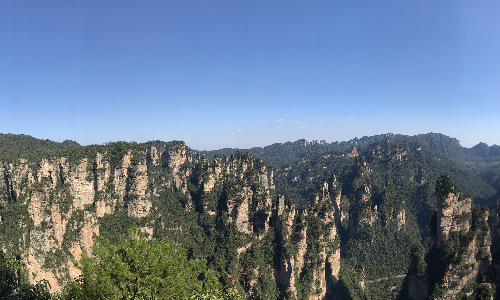
 Shanghai
Shanghai In the morning, we will visit the Zhangjiajie Grand Canyon. The plunging waterfalls, the dense trees, the fresh air, and the mist on the stream make you feel like you are in an otherworldly sort of place. A spring meanders in the canyon, along which are trails built with planks. At the entrance of the canyon is a narrow valley: A Line of Sky. The valley is 5 kilometers long, the longest of its kind in the world. The narrowest section is only about 1 meter wide. Looking up from the valley, you will see the sky that looks like a line. That’s why it got the name-A Line of Sky. We will also have an exciting experience this morning: to walk on the Glass Bridge. Looked from a distance, it looks like a piece of white silk floating between the clouds and fog. It is 300 meters above the ground and 430 meters long, and the whole bridge floor is paved with glass. Stepping on it, you will have a superb view of the Grand Canyon. Come and have a try if you are not afraid of height.
After lunch, we will go to the Baofeng Lake Scenic Area. Surrounded by mountains and waterfalls, this scenic area consists of two parts: Baofeng Lake and Eagles Nest Village. It was one of the shooting sites of the Chinese TV series“Journey to the West”. Baofeng Lake is 2,500 meters long. It is surrounded by steep peaks and there are two small islands in the lake. One can take the Baofeng Lake cruise to appreciate the clear lake reflecting the peaks and the peculiar magnificent mountain scenery. Eagles Nest Village is a wonderful mountaineering place surrounding Baofeng Lake. It is said that there was once a bandits’ village on the mountain top, hence the name, literally meaning eagles’ nest, referring that bandits occupy the land like eagles. Your tour in Zhangjiajie will end in this mysterious mountain.
In the evening, our tour guide will transfer you to the airport. Then you will take the estimated flight MU8457 20:40/22:50 to Shanghai.
Welcome to Shanghai, your last stop in China! Our tour guide will pick you up at the airport and transfer you to the hotel. Shanghai is a bustling metropolis in southeast China. It covers an area of 6,340 square kilometers and has a population of about 25 million. Shanghai is a city with diversity and inclusiveness. You will see not only bustling streets and skyscrapers here, but also western-style buildings, local ancient alleys, and traditional Chinese gardens. The food here, whether that in high-end restaurants, or that in the snack stands will not disappoint you. Well, now let’s start our journey in this magic city.


After breakfast, we will visit the Jade Buddha Temple. Although it is in the downtown area, it is a place of tranquility. This temple is popular in that there are jade Buddha statues. In Chinese culture, jade symbolizes predestined relationships, so many young people come here to seek blessing. The Great Buddha Hall is the main building in the temple. There are three holy Buddha sitting in the hall - Sakyamuni Buddha in the middle, Amitabha on the left, and Medicine Guru Buddha on the right. All of them are about four meters tall with a very peaceful expression. Some distinguished foreign guests have visited this temple, including former First Lady of the USA, First Lady of Brazil, and Princess Margaret of the UK.
Next, we will go to the Yu Garden (closed each Monday). With a history of over 400 years, it was a private garden built in the Ming Dynasty (1368-1644). Yu in Chinese means pleasing and satisfying. The original owner of this garden named it with Yu because he wanted his family that lived in this garden to be satisfied. Sansui Hall is the one of the places you cannot miss when you visit the garden. Its name Sansui is derived from the book History of the Later Han Dynasty, and means ‘propitious’ and ‘lucky’. Wheat, corns, and fruits patterns were carved on the windows of the main entrance. This hall was the place where official celebrations were held and where the imperial decrees were declared in the Qing Dynasty. It was also the place for literati and country gentlemen to hold gatherings.
Then, we will go to Shanghai Old Street, a place that combines sightseeing, shopping, leisure activities and culture. The buildings here are all in ancient style. Walking here, you will experience the busy street market in Shanghai 100 years ago. You can taste some authentic local snacks here, such as sweet green rice balls, steamed buns, and soup dumplings.
After lunch, we will first visit the Shanghai Tower, a 127-storey building with a height of 632 meters. There is an observatory deck on the 119th floor, and it only takes 55 seconds to get there by the express lift. From the observation deck, you will have a panoramic view of the whole city. The beautiful city view will surely amaze you.
Next, we will have a walk on the Bund. It has a whole length of about 1.5 kilometers. Here stand buildings with different western architectural styles, which give the Bund the fame as a ‘museum of international architecture’. There is a square named after the first mayor of Shanghai, and a bronze statue of him stands on the square. On weekends, concerts are held in front of his statue. And there’s a fountain on the square, which sprays water as the music and light change.
Next, we will head to the Nanjing Road, a pedestrian street. Everything here, from the street lamps, to the dust bins and even the manhole covers, is well-designed, which will make tourists delighted. Walking on the 1.2-kilometer road, you will see many time-honored restaurants, pastry stores, and shopping malls. When the sun sets, you will also see the beautiful night scene. With no heavy traffic, it is a perfect place to go shopping, have meals, watch films, and take photos. After some free time here, our tour guide will drive you to the hotel.

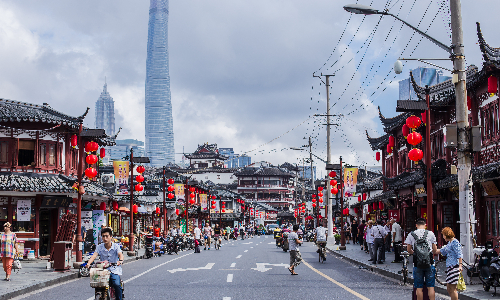
In the morning, we will drive about 50 kilometers southwest to the Zhujiajiao Ancient Water Town. It’s about 90 minutes’ drive. As a classical water town in south China, Zhujiajiao Ancient Water Town is the best-preserved among the four ancient towns in Shanghai. There is a famous street called “Yixianjie”, meaning a narrow street. Standing on the street and looking up, you will only able to see a line of the sky. It’s the best-preserved ancient street in this suburb. Ancient-style shop signs and red lanterns can be seen anywhere in front of the shops and other residential buildings. The narrowest part of the street is only 2 meters wide. The residents here can just open their windows to pass things to their neighbors or chat with them.
After lunch, we will go to the Former French Concession. It was the earliest, and gradually developed into the largest and most prosperous, French concession in China. Architectures here are uniformly French style. Plane trees are planted on both sides of the street here. That is why Shanghai is also called “Oriental Paris.”
Next, we will have a walk on the Tianzifang Market, an artsy area housing bars, cafes, crafts shops, design studios, galleries, and boutiques. You will learn more about old Shanghai and can buy traditional Chinese crafts here if you like.
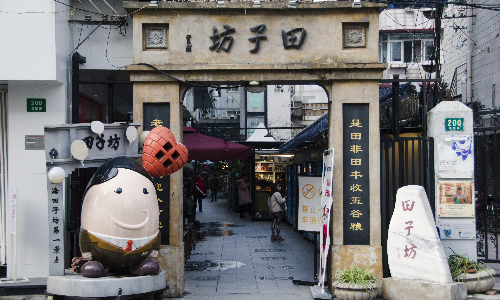
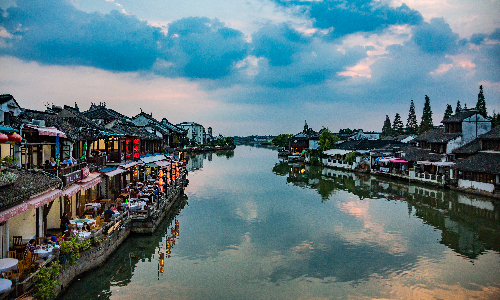
This is the end of our 18-day tour. Our tour guide will transfer you to the airport according to your flight schedule. If you take your flight at the Pudong International Airport, we can also arrange the Maglev Train for you if you want to experience it. Welcome to China again!
Author: Han Chengcheng
Proofreader: Li Yiwen
| City | Five Star hotel list | Four Star hotel list |
|---|---|---|
| Beijing | Sunworld Dynasty Hotel Beijing Wangfujing | Sunworld Hotel Wangfujing |
| Xi'an | Tianyu Gloria Grand Hotel Xi'an | Sunworld Dynasty Hotel |
| Guilin | Lijiang Waterfall Hotel | Guilin Bravo Hotel |
| Chengdu | Sofitel Chengdu Taihe | Yinhe Dynasty Hotel |
| Yangtze River Cruise | Victoria Anna | Victoria Anna |
| Zhangjiajie | Hotel Pullman Zhangjiajie | Zhangjiajie Huatian Hotel |
| Shanghai | Ocean Hotel Shanghai | Ambassador Hotel |
 |
![]() About your child or infant, please contact us for a discounted price.
About your child or infant, please contact us for a discounted price.



We started with a few days in Beijing & ended in Shanghai, from where we visited the Forbidden City and Great Wall. In between we visited Terra Cotta Warriors Museum, Panda Base, Shanghai Disneyland.

We had a wonderful holiday in China which will remain long in the memory. China is a breathtakingly beautiful country full of splendid temples and palaces, mountains and rivers, peaceful rural scenes and bustling shopping streets.
 QUICK ENQUIRY
QUICK ENQUIRY